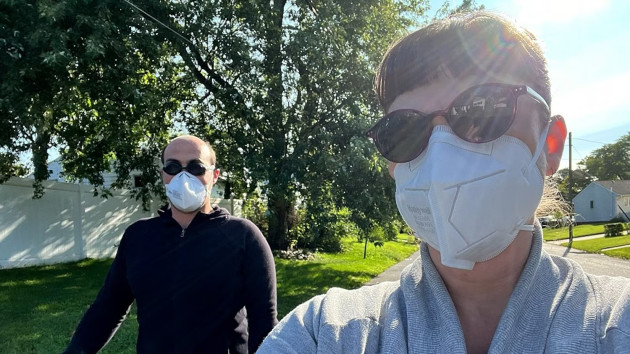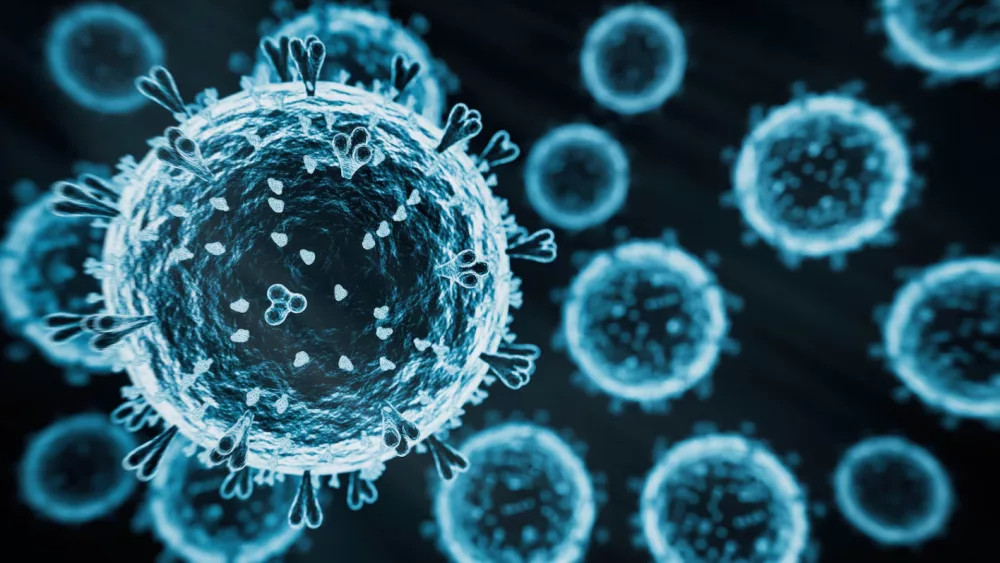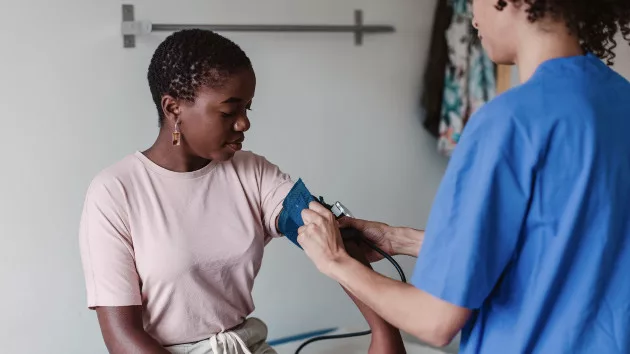(NEW YORK) — Sara Anne Willette has spent more than 1,620 days in isolation since the start of the COVID-19 pandemic.
The New Jersey resident took health precautions in public before the pandemic because of her common variable immunodeficiency, which means she doesn’t make enough antibodies to fight infections.
Simple tasks like going for a walk down the street or taking a trip to the grocery store are laden with safety hurdles and anxiety for Willette.
Stressful tasks, like moving from Iowa to New Jersey during the pandemic for her husband’s new job, are now even more taxing. The two drove overnight to avoid crowds at gas stations and rest stops, and she’s prepared to do it again. The substantial health precautions in her day-to-day life are forcing her and her family to pack up their life once more and look for a new home in the countryside.
“I’m angry that society is largely inaccessible and I have to risk my life for the bare minimum, like medical care,” Willette told ABC News in a phone call. “Why live in civilization if all of it is completely inaccessible?”
More than four years after the start of the COVID-19 pandemic, Willette is among the immunocompromised and disabled Americans who’ve complete changed their way of living to survive.
Her anger was tinged with disappointment as she talked about how the rest of the world has gone back to normal despite the hundreds of people across the country dying from COVID-19 each week amid a summer surge of the virus.
COVID-19 has also been a debilitating event for tens of millions of people who have or are currently experiencing long COVID, which in some cases has been defined as a disability under the Americans with Disabilities Act.
With some lawmakers beginning to propose mask bans in hopes of reducing crime, it’s no longer an option for some to live life normally among the rest of society.
Willette was among the people ABC News checked back in with after previously talking to them about isolating two years after the pandemic began.
Finding a new normal
There are simple joys that Willette misses: having a garden, running, walking, letting her dogs run without a leash and drinking coffee on a porch.
She’s planning on moving to the mountains — somewhere between New Hampshire and Virginia — and gaining enough acreage to allow her and her family to embrace the activities they lost during the pandemic. However, being alone out in the countryside isn’t the goal for Willette.
Rather, she intends to build a pathogen-aware community. That means buying enough land so other disabled, immunocompromised or health-conscious able-bodied people who don’t want to get COVID-19 can join them and create a home of their own.
“We want something that feels like normal but is set up in a way that we decrease harm for everyone in the community,” Willette said. “We can’t do that in an urban area or even in a suburban area. There are too many risks.”
Her mother and mother-in-law intend to move and join Willette, her husband and her son on the property as well.
For Charis Hill, a California resident who has a systemic inflammatory disease and takes immunosuppressive medications, it’s been hard to access an in-person doctor’s appointment since many safety precautions for COVID-19 are no longer being taken in medical care facilities.
As someone with “high-level medical needs,” the lack of COVID precautions has even made seeking routine care a challenge.
“Just the fact that a medical environment that is supposed to know what a virus can do, most medical environments no longer require masking, and that’s what makes it unsafe for people like me to go, for anybody to go,” Hill told ABC over the phone.
“The impact of the delayed care, where people can’t go get routine care, that’s going to affect the whole health care system. Emergencies happen because of delayed care.”
Despite the stress and forced isolation, they find moments of joy growing their own food in their garden, and stay busy by working to reduce the local feral cat population through Trap-Neuter-Return practices.
They break their isolation monthly to meet at a park with a close-knit circle of friends who take similar safety precautions — they’re all masked, socially distanced and have tested beforehand.
“That’s really the only way for me to meet strangers and also to make new friends,” Hill said.
Mask bans would further bar immunocompromised people from public life, according to Hill.
Such bans “make it unsafe for us to exist,” Hill noted, because people may feel pressure not to wear masks when they’re sick or if immunocompromised people are worried about backlash for doing so.
With more people testing positive for COVID this summer, and with the fall and winter virus season ahead, Hill says society’s “new normal” should involve free testing, vaccines, access to at-home antiviral therapy paxlovid and flexible hybrid working options to mitigate the spread of illnesses.
“We need a new normal, and a new normal that is equitable for everyone, and that not only prioritizes high risk people, but that also reduces infection overall,” Hill said.
COVID concerns for the immunocompromised population
Immunocompromised people — about 3% of the adult population in the U.S., according to the National Institutes of Health — continue to face potentially serious medical complications or death when it comes to COVID-19. Even for those who were not previously at risk now have seen life-changing heath impacts.
“Long COVID can happen to anyone, and I have certainly seen young, healthy, vigorous athletes have prolonged, debilitating symptoms from long COVID,” Dr. Jeannina Smith, the medical director of University of Wisconsin’s Transplant Infectious Disease Program, told ABC over the phone.
However, society has largely appeared to have moved on. The CDC stopped recording some COVID-19 related data and some politicians have proposed mask bans as a potential solution to crime.
“It takes us a step back for public health,” Hill said. “We have other pandemics that are coming, and it’s going to make it harder to reenact mask mandates if we need them in the future.”
For the immunocompromised, regular society could seem like a minefield, according to Dr. Cassandra M. Pierre, the medical director of Public Health Programs and the associate hospital epidemiologist at Boston Medical Center.
She noted that people at higher risk for complications “are still, unfortunately, in our hospitals today. We see that they have this forced risk of going on to develop critical COVID or potentially even die. This is still occurring. COVID is still happening.”
This is all happening despite a better understanding of disease transmission and the information needed to be better equipped to empower communities to protect their health, Pierre added.
Patients have been harassed or mocked for wearing masks in public, Dr. Jeannina Smith noted, despite international and national medical organizations emphasizing the importance of mask wearing as a mitigation tactic for illnesses. Hill has experienced this first hand.
“You can’t look at someone and know that they’re receiving immunosuppression for an organ transplant or an autoimmune condition, and they remain at risk,” Smith said.
“Even if you don’t have individual risk, any person can still spread COVID to someone who has higher risk,” she said. “In fact, much of the spread continues to be from asymptomatic person. The very idea that we would criminalize wanting to protect our fellow citizens is pretty horrific.”
The federal government has recently changed its tune amid the summer COVID spike and is preparing for the upcoming fall and winter season by approving and granting emergency use authorization for updated COVID-19 vaccines and restarting its free at-home COVID tests program.
Copyright © 2024, ABC Audio. All rights reserved.






